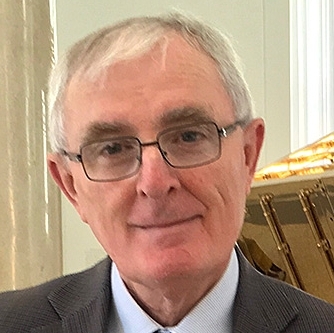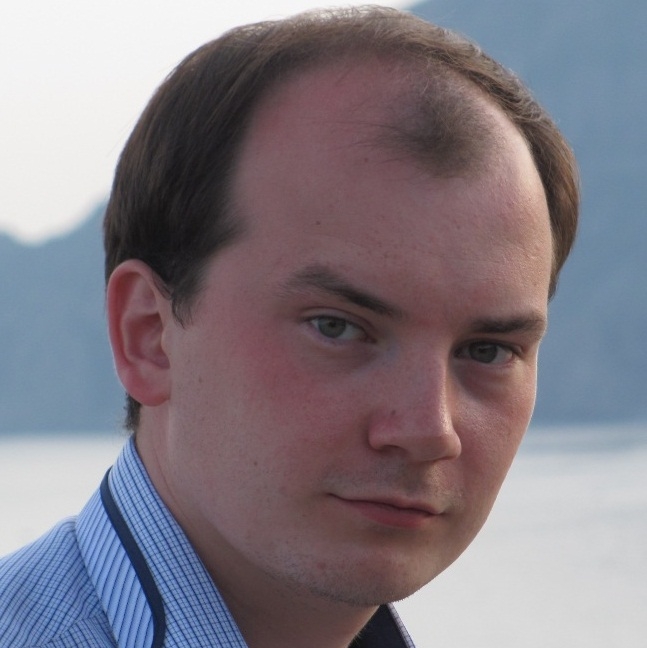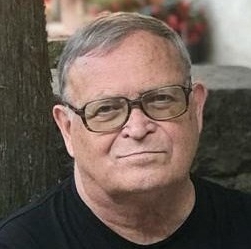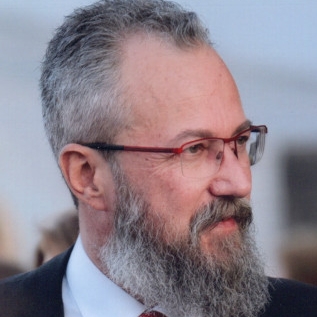Team
![]() Martin
Martin
![]() Tony
Tony
 Antonio
Antonio
 Evgen
Evgen
 Sergei
Sergei
 Stefano
Stefano
The History Activities Committee is looking forward to assist you in your history-related activities. The 2023 committee consists of:
- Martin Bastiaans, History Activities Coordinator (2021-2023)
- Tony Davies, Past History Activities Coordinator (2013-2020)
- Antonio Savini, current IEEE History Committee chair (2022-2023)
- Evgen Pichkalyov, current IEEE History Committee member (2022-2023)
- Sergei Prokhorov, current IEEE History Committee member (2022-2023)
- Stefano Selleri, current IEEE History Committee member (2023-2024)
Feel free to contact us at [email protected], but include [email protected] in CC, just in case the email alias may not work properly.
- List of Region 8 Section history officers (.xlsx)
- List of Region 8 History Network subscribers (.xlsx)
IEEE Region 8 History webpage
The Region 8 History webpage is updated whenever new information becomes available.
News
- Recent Milestone dedication ceremony:
Paris, France, Invention of Sonar, 1915-1918
Dedication ceremony 7 December 2023 – IEEE France Section
From 1915 to 1918, Paul Langevin demonstrated the feasibility of using piezoelectric quartz crystals to both transmit and receive pulses of ultrasound and thereby detect submerged submarines at ranges up to 1300 metres. The system, later called sonar, validated Constantin Chilowsky’s proposal to use ultrasound for this purpose. The technology was used successfully during World War II, and led to other applications including depth sounding and medical echography. - Recently approved IEEE Milestone:
Haifa, Israel, Intel 8087 Math Coprocessor, 1980
Dedication ceremony to be decided – IEEE Israel Section
Intel’s release of its 8087 math coprocessor vastly expanded the capabilities of its 8086 and 8088 microprocessors by enabling floating-point arithmetic, binary-decimal conversion, and transcendental functions, using special CPU instructions designed to invoke a coprocessor. The Intel 8087’s robust exception handling and breadth of features surpassed all existing computers. Its data types and arithmetic were the basis of the IEEE 754 Floating-Point Standard, and revolutionized computing. - Recent Milestone dedication ceremonies:
Skopje, North Macedonia, First robotic control from human brain signals, 1988
Dedication ceremony 10 October 2023 – IEEE North Macedonia Section
In 1988, in the Laboratory of Intelligent Machines and Bioinformation Systems, human brain signals controlled the movement of a physical object (a robot) for the first time worldwide. This linked electroencephalogram (EEG) signals collected from a brain with robotics research, opening a new channel for communication between humans and machines. EEG-controlled devices (wheelchairs, exoskeletons, etc.) have benefitted numerous users and expanded technology’s role in modern society.
Grenoble, France, MPEG Multimedia Integrated Circuits, 1984-1993
Dedication ceremony 28 September 2023 – IEEE France Section
Beginning in 1984, Thomson Semiconducteurs (now STMicroelectronics) developed multimedia integrated
circuits, which accelerated Moving Picture Experts Group (MPEG) standards. By 1993, MPEG-2 integrated
decoders – including innovative discrete cosine transform (developed jointly with ENST, now Telecom ParisTech), bitstream decompression, on-the-fly motion compensation, and display unit – were announced in one silicon die: the STi3500. Subsequent MPEG-2 worldwide adoption made compressed full-motion video and audio inexpensive and available for everyday use. - Recently approved IEEE Milestone:
Birmingham, England, The development of the cavity magnetron, 1939-1941
Dedication ceremony to be decided – IEEE UK and Ireland Section
In this building from 1939 to 1941, University of Birmingham researchers John Randall, Harry Boot, and James Sayers conceived and demonstrated fundamental ways to improve the output power, efficiency, and frequency stability of cavity magnetrons. Further developed and refined by others, these advances facilitated the Allies’ deployment of microwave radar systems in World War II. Cavity magnetrons were later adapted for use in industrial heating and microwave ovens. - Recently added Oral History:
The List of Oral Histories related to Region 8 (.xlsx) on the Region 8 History webpage has been updated by adding the transcript of an interview with Bruce B. Barrow; see Bruce Barrow, an oral history conducted in 2013 by Sheldon Hochheiser, IEEE History Center, Piscataway, NJ, USA. The interviewee was seminal in the foundation of the IRE Benelux Section (now IEEE Benelux Section) and IRE Region 9 (now IEEE Region 8). - HISTELCON 2023, Science and Technology or Technology and Science?, took place in Florence, Italy, 7-9 September 2023, as a hybrid event, held both live and online.
- Recently approved IEEE Milestone:
Paris, France, Invention of Sonar, 1915-1918
Dedication ceremony 7 December 2023 – IEEE France Section
From 1915 to 1918, Paul Langevin demonstrated the feasibility of using piezoelectric quartz crystals to both transmit and receive pulses of ultrasound and thereby detect submerged submarines at ranges up to 1300 metres. The system, later called sonar, validated Constantin Chilowsky’s proposal to use ultrasound for this purpose. The technology was used successfully during World War II, and led to other applications including depth sounding and medical echography. - Recent Milestone dedication ceremony:
Paris/Lyon, France, The birth of electrodynamics, 1820-1827
Dedication ceremonies 3 April 2023 (Paris) and 4 April 2023 (Lyon) – IEEE France Section
Stimulated by experimental reports that an electric current could deflect a compass needle, André-Marie Ampère discovered the fundamental law of electrodynamics, the science of interactions between electric currents. He then developed the theory that electric currents are responsible for magnetism. These achievements formed the basis for electrical technologies, including electric motors and generators. In 1881, the International Electrical Congress named the unit of electric current the ‘ampere’ (A). - The HISTELCON 2023 (Florence, 7-9 September 2023) website is live at https://2023.ieee-histelcon.org. Paper submission date 15 April 2023.
- Recently approved IEEE Milestone:
Skopje, North Macedonia, First robotic control from human brain signals, 1988
Dedication ceremony 10 October 2023 – IEEE North Macedonia Section
In 1988, in the Laboratory of Intelligent Machines and Bioinformation Systems, human brain signals controlled the movement of a physical object (a robot) for the first time worldwide. This linked electroencephalogram (EEG) signals collected from a brain with robotics research, opening a new channel for communication between humans and machines. EEG-controlled devices (wheelchairs, exoskeletons, etc.) have benefitted numerous users and expanded technology’s role in modern society. - Recently added Oral History:
The List of Oral Histories related to Region 8 (.xlsx) on the Region 8 History webpage has been updated by adding the transcript of an interview with Hendrik Van Brussel; see Hendrik Van Brussel, an oral history conducted in 2011 by Peter Asaro, Indiana University, Bloomington Indiana, for Indiana University and the IEEE. The interviewee is residing in the IEEE Benelux Section. - Recently approved IEEE Milestones:
Grenoble, France, MPEG multimedia integrated circuits, 1984-1993
Dedication ceremony 28 September 2023 – IEEE France Section
Beginning in 1984, Thomson Semiconducteurs (now STMicroelectronics) developed multimedia integrated circuits, which accelerated Moving Picture Experts Group (MPEG) standards. By 1993, MPEG-2 integrated decoders – including innovative discrete cosine transform (developed jointly with ENST, now TelecomParisTech), bitstream decompression, on-the-fly motion compensation, and display unit – were announced in one silicon die: the STi3500. Subsequent MPEG-2 worldwide adoption made compressed full-motion video and audio inexpensive and available for everyday use.
Paris, France, The birth of electrodynamics, 1820-1827
Dedication ceremony to be decided – IEEE France Section
Stimulated by experimental reports that an electric current could deflect a compass needle, André-Marie Ampère discovered the fundamental law of electrodynamics, the science of interactions between electric currents. He then developed the theory that electric currents are responsible for magnetism. These achievements formed the basis for electrical technologies, including electric motors and generators. In 1881, the International Electrical Congress named the unit of electric current the ‘ampere’ (A). - IEEE Milestone proposals under consideration by the IEEE History Committee
- France: Invention of sonar, 1915-1918
- North Macedonia: First control of a physical object (robot) using signals from a human brain, 1988
- Benelux: ADSL: expediting broadband internet access for society, 1993-1997
- UK and Ireland: The development of the cavity magnetron, 1939-1941
- Germany/Poland: Long distance transmission of electrical power using three-phase alternating current, 1889-1912
- News Archive — News items about Milestones and Conferences are ordered by year: 2022, 2021, 2019, 2017, 2015, 2014, 2013, 2010.
Highlights from 2022 – see also News Archive: 2022
- Minutes of the IEEE Region 8 Committee meetings
With the exception of four Region 8 Committee meetings – in Geneva (7 September 1965), Leuven (16 September 1966), Tel Aviv (24 October 1968), and Dubrovnik (25-26 October 1974) – we have (scanned) versions of all meeting minutes; and of the above-mentioned meetings in Leuven and Tel Aviv, we have the agendas. The (scanned) versions have been collected in five pdf files, which are available for download:
1962-1970 (.pdf), 1971-1983 (.pdf), 1984-1993 (.pdf), 1994-2009 (.pdf), and 2010-2022 (.pdf). - Old issues of IEEE Region 8 News
Digital versions of IEEE Region 8 News from 2002 onward can be found in the Region 8 News archive of back issues. All older issues of IEEE Region 8 News and its predecessors — IEEE Region 8 newsletter (1967-1986; issues 1-76) and IEEE Region EIGHT News (1987-1989; issues 77-85) — have now been scanned: 1092 pages with a total size of about 0.7 GB. Note that volume numbers were introduced in Region 8 News in 1998 with the August issue (Volume 1, Number 1); until then, the numbering was consecutively from 1 till 122.
The scanned versions can be downloaded by clicking on the links in the table that can be found here. In addition to news about the IEEE and the activities that took place on the Region level, these old issues contain lots of information about our Sections and may thus form a valuable source of information, especially for those Sections who want to fill the gaps in their history. To help Sections, an index has been created to direct Section leaders to the relevant pages in the issues 1-122 (December 1967 – May 1998) where news about their Section can be found. - Proceedings of HISTELCON
The proceedings of HISTELCON 1 through 7, available at IEEE Xplore, are now freely accessible for everyone without any payment; see also the HISTELCON entry on ETHW.- Paris, France, 11–12 September 2008
- Madrid, Spain, 3–5 November 2010
- Pavia, Italy, 5–7 September 2012
- Tel Aviv, Israel, 16–21 August 2015, held jointly with the 42nd annual meeting of ICOHTEC, the International Committee for the History of Technology: History of High-Technologies and Their Socio-Cultural Contexts
- Kobe, Japan, 7–8 August 2017, together with IEEE Region 10
- Glasgow, United Kingdom, 18–19 September 2019
- Moscow, Russia, 10-12 November 2021
- IEEE Milestones dedicated in 2022:
Hayes, England, First computerized tomography (CT) X-ray scanner, 1971
Dedication ceremony 26 October 2022 – IEEE UK and Ireland Section
On 1 October 1971, a team at the EMI Research Laboratories located on this site produced an image of a patient’s brain, using the world’s first clinical X-ray computerized tomography scanner, based on the patented inventions of Godfrey Hounsfield. The practical realization of high-resolution X-ray images of internal structures of the human body marked the beginning of a new era in clinical medicine.
Budapest, Hungary, Budapest metroline No. 1, 1896
Dedication ceremony 20 October 2022 – IEEE Hungary Section
In 1896, Budapest Metro Line No. 1 was inaugurated, the first underground railway designed specifically to use electric power, rather than adapted from steam-powered systems. It offered several innovative elements, including bidirectional motor carriages, the “goose neck chassis,” and electric lighting in the stations and carriages. This line’s design influenced later subway construction in Boston, Paris, Berlin, and other metropolitan areas worldwide.
Manchester, England, The Atlas computer and the invention of virtual memory, 1957-1962
Dedication ceremony 21 June 2022 – IEEE UK and Ireland Section
The Atlas computer was designed and built in this building by Tom Kilburn and a joint team of the University of Manchester and Ferranti Ltd. The most significant new feature of Atlas was the invention of virtual memory, allowing memories of different speeds and capacities to act as a single large fast memory separately available to multiple users. Virtual memory became a standard feature of general-purpose computers.
Manchester, England, Manchester University “Baby” computer and its derivatives, 1948-1951
Dedication ceremony 21 June 2022 – IEEE UK and Ireland Section
At this site on 21 June 1948 the “Baby” became the first computer to execute a program stored in addressable read-write electronic memory. “Baby” validated Williams-Kilburn Tube random-access memories, later widely used, and led to the 1949 Manchester Mark I which pioneered index registers. In February 1951, Ferranti Ltd’s commercial derivative became the first electronic computer marketed as a standard product delivered to a customer.
See also the article in IEEE Spectrum.
Eynsham, England, Active shielding of superconducting magnets for MRI, 1984-1989
Dedication ceremony 17 June 2022 – IEEE UK and Ireland Section
At this site, the first actively shielded superconducting magnets for diagnostic Magnetic Resonance Imaging (MRI) use were conceived, designed, and produced. Active shielding reduced the size, weight, and installed cost of MRI systems, allowing them to be more easily transported and advantageously located, thereby benefiting advanced medical diagnosis worldwide.
Leiden, Netherlands, String galvanometer to record a human electrocardiogram, 1901-1905
Dedication ceremony 8 April 2022 – IEEE Benelux Section
On 22 March 1905, the first successful clinical recording of a human electrocardiogram (ECG) took place at this location, which at the time was the Academic Hospital Leiden. Willem Einthoven’s pioneering work, from 1901 to 1905, resulted in a string galvanometer specifically designed to measure and record the heart’s electrical activity, which made this medical achievement possible. This invention marked the beginning of electrocardiography as a major clinical diagnostic tool.
IEEE Milestones
- The IEEE Milestones Program honors significant technical achievements in all areas associated with IEEE. It is a program of the IEEE History Committee, administered through the IEEE History Center.
- List of IEEE Milestones worldwide
- List of IEEE Milestones in Region 8 (.xlsx) with links to ETHW and to their locations on Google maps
- Status report of Milestones under consideration by the IEEE History Committee
- List of achievements suitable for Milestones
- List of achievements suitable for Milestones featuring women
- List of candidate Milestones in Region 8 approaching major anniversaries (.xlsx)
Engineering and Technology History Wiki
- The Engineering and Technology History Wiki is a wiki-based platform that allows IEEE members and Organizational Units to collaboratively preserve and share their history (including, for instance, the history of individual IEEE Sections).
- List of Region 8 Section histories (.xlsx)
- List of Oral Histories worldwide
- List of Oral Histories related to Region 8 (.xlsx)
- List of First-Hand Histories worldwide
Region 8 history book
- The book A short history of IRE Region 9 / IEEE Region 8 (.pdf) presents a history of IEEE Region 8 spanning its origins from the IRE Region in Europe, through the IRE/AIEE merger forming the IEEE and subsequently to the present day Region 8 consisting of Europe, the Middle East, and Africa.
Note that if you click on the link above and open the Document Outline in the left-hand side bar, you can immediately jump to any section of the book and easily navigate through it. - More information about the history of Region 8 can be found on ieeer8.org/history/
Documents archive
- Current report of the History Activities Coordinator (.pdf)
- Region 8 History Activities – Final Report 2021-2022) (.pdf)
- Previous reports of the History Activities Coordinator (Martin Bastiaans, 2021-2022) (.pdf) in reverse order
- Previous reports of the History Activities Coordinator (Tony Davies, 2013-2020) (.pdf) in reverse order
- Previous reports of the History Activities Coordinator (Jacob Baal-Schem, 2007-2010) (.pdf) in reverse order
IEEE History Center – a selection of additional weblinks
- IEEE History Center Programs & Projects
- IEEE History Center Publications
- IEEE History Center Newsletters
- REACH – Raising Engineering Awareness through the Conduit of History
- IEEE Life Members’ Fellowship in the History of Electrical and Computing Technology
- Elizabeth & Emerson Pugh Young Scholar in Residence at the IEEE History Center
- IEEE William and Joyce Middleton Electrical Engineering History Award
- Bernard S. Finn IEEE History Prize
